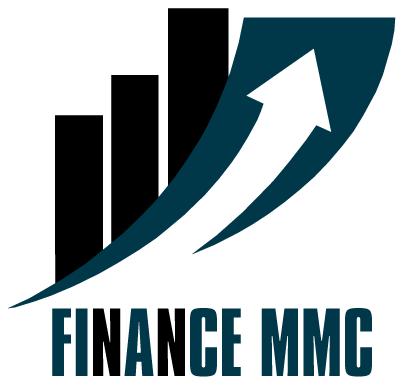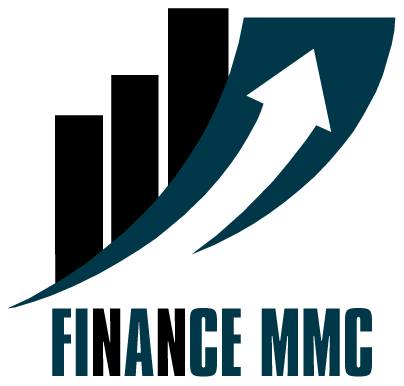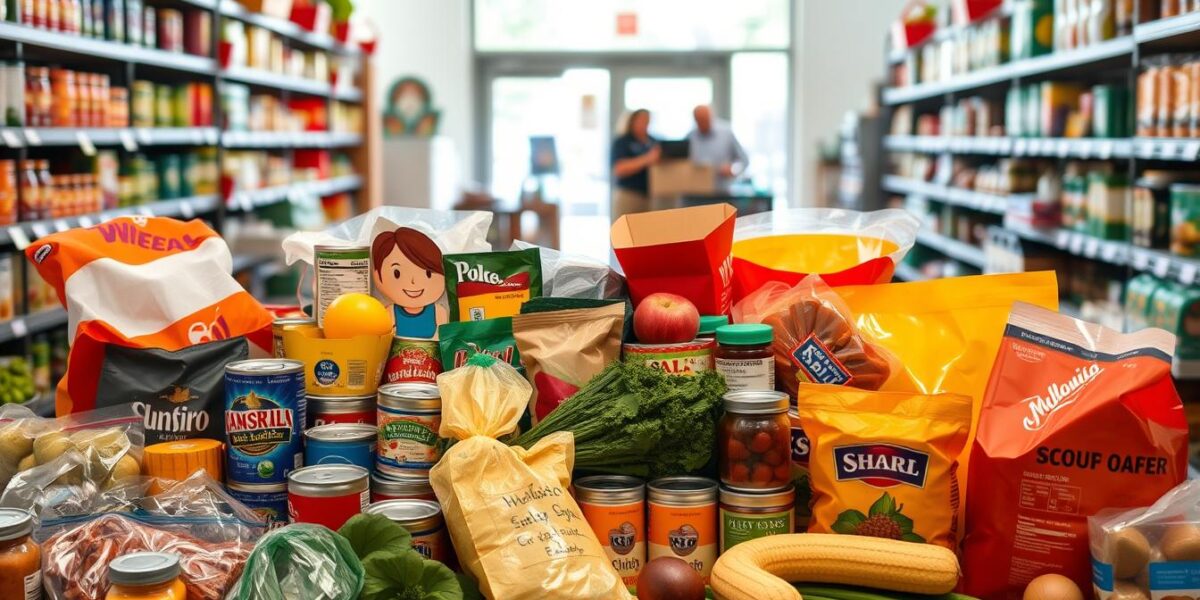Learn how long can you apply for food bank and understand the eligibility requirements, income limits, and documentation needed to receive ongoing food assistance in the US
Did you know that nearly 38 million Americans rely on food banks each year for critical nutrition support? Understanding food bank eligibility can be a lifeline for individuals and families facing economic challenges, let’s see how long can you apply for food bank .
Food assistance programs offer essential support for those struggling with food insecurity. When you’re navigating how to qualify for food banks, several key factors determine your eligibility. These programs aim to bridge nutritional gaps for individuals experiencing temporary financial hardships.
The Emergency Food Assistance Act of 1983 established a comprehensive framework for food distribution across the United States. This legislation ensures that food bank services reach communities most in need, providing critical support through various government and nonprofit organizations.
Key Takeaways
- Food bank eligibility varies by location and organization
- Income guidelines are primary determinants of qualification
- Multiple food assistance programs exist for different needs
- Documentation is crucial for successful application
- Emergency food assistance can provide rapid support
- Some programs consider household size and composition
Understanding Food Bank Assistance Programs
Food assistance programs are key in fighting hunger in the U.S. They offer vital help to millions, ensuring they get the food they need.
Recent USDA data shows 13.5% of U.S. homes struggle with food insecurity. This means about 47.4 million people face challenges in getting enough to eat.
Types of Food Assistance Available
There are several important programs to help people and families:
- The Emergency Food Assistance Program (TEFAP)
- Commodity Supplemental Food Program (CSFP)
- Food Distribution Program on Indian Reservations (FDPIR)
Food Banks vs Food Pantries
It’s important to know the difference between food banks and pantries:
| Food Banks | Food Pantries |
|---|---|
| Centralized warehouses collecting food donations | Direct distribution centers serving local communities |
| Distribute food to multiple pantries and organizations | Provide immediate food assistance to individual households |
| Operate large-scale food collection networks | Operate at neighborhood or community levels |
Emergency Food Distribution Centers
Emergency feeding groups focus on quick food delivery in tough times. Feeding America gives out about 20 to 25 million pounds of food each year. They help through local pantries, schools, and community centers.
“Our mission is to ensure no family goes hungry during challenging times.”
TEFAP offers free food commodities to those in need. People can get food once a month at specific places. To get help, you need to show ID, proof of where you live, and meet income rules.
Basic Eligibility Requirements for Food Bank Services
Understanding food bank eligibility criteria helps you see if you qualify for food help. Food banks support those struggling with food insecurity through special programs.
To get food bank services, you must meet certain requirements. These rules help make sure help goes to those who really need it.
- Demonstrate financial need
- Provide proof of residency
- Meet income guidelines
- Show valid identification
Can anyone go to a food bank? Not really. Food banks have rules to check if you qualify. Local food banks work with community groups to decide who gets help.
“Food banks are community lifelines, providing essential nutrition to those facing economic challenges.” – Community Food Support Network
How do you qualify for food banks? Each place has its own rules. But, common things include:
| Qualification Factor | Typical Requirement |
|---|---|
| Income Level | Below 185% of Federal Poverty Line |
| Residency | Local community or specific service area |
| Documentation | Proof of income, ID, utility bills |
Note: Eligibility varies by location, so contact your local food bank for precise requirements.
Income Guidelines and Qualification Criteria
Knowing the income limits for food banks can help you see if you qualify for food help. These rules are key for families in tough financial spots.
The SNAP program looks at many things to decide if you can get food help. How big your household is is a big part of this.
Monthly Income Limits
Income limits change based on how many people live in your home. States set these limits, usually between 185% and 300% of the U.S. Federal Poverty Guidelines.
| Household Size | Annual Income Limit | Monthly Income Threshold |
|---|---|---|
| 1 Person | $27,861 | $2,322 |
| 2 Persons | $37,814 | $3,151 |
| 3 Persons | $47,767 | $3,980 |
| 4 Persons | $57,720 | $4,810 |
Household Size Considerations
Your household size affects if you can get food help. Adding more family members means you can make more money and still qualify.
- Income calculations include all household members
- Verification can be done through self-attestation
- Recent income from the last 30 days is typically evaluated
Special Cases and Exceptions
“Flexibility in eligibility ensures that those most in need can access critical food assistance.”
Some groups get special help from food banks. This includes veterans, people with disabilities, and families with mixed immigration statuses.
Remember, each food bank has its own rules. It’s important to check with your local food bank to see what they need.
How Long Can You Apply for Food Bank
Knowing how long food bank help lasts is key to planning your food needs. Food banks in the U.S. offer different levels of help. This depends on local rules and your personal situation.
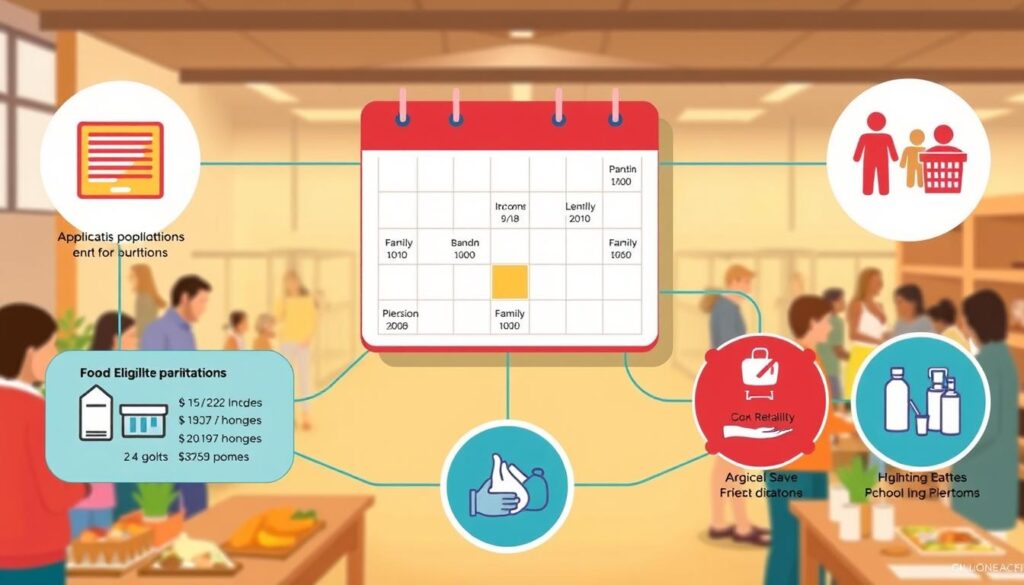
- Local food bank rules
- How much food your household needs
- What other help is available in your area
- Government food programs
The Emergency Food Assistance Program (TEFAP) is a big help for those needing food all the time. New federal plans have made more food help available, especially in emergencies.
“Every $1 donated can provide up to 7 meals for those facing hunger” – FIND Food Bank
Many food banks have flexible ways to help. Some let you apply every month, while others help every few months. You might get help again if:
- You show you don’t have enough money
- Your household is big
- You’re facing money problems
- You have special needs
The COVID-19 pandemic has also made more food help available. The Families First Coronavirus Response Act made SNAP rules easier for some. This means more people can get help.
Tip: Always contact your local food bank directly to understand specific application duration and frequency guidelines.
Required Documentation for Food Bank Applications
Gathering the right documents for a food bank application can make the process easier. Knowing what you need is key for a successful application.
When you’re ready to apply for food assistance, have several important documents ready. The exact needs can vary by food bank. But, most ask for similar things.
Identification Requirements
- Government-issued photo ID
- Social Security card
- Birth certificate
- Driver’s license or state ID
Proof of Income and Residency
Showing proof of income is crucial for your application. Food banks need documents that prove your financial situation.
| Document Type | Acceptable Proof |
|---|---|
| Income Verification | Recent pay stubs, unemployment benefits statement, Social Security income documentation |
| Residency Proof | Utility bill, lease agreement, mortgage statement |
Additional Supporting Documents
Some food banks might ask for extra documents to understand your situation better:
- Tax returns for self-employed individuals
- Medical expense records
- Childcare cost documentation
- Proof of immigration status (if applicable)
Pro Tip: Call your local food bank in advance to confirm their exact documentation requirements.
Remember, each food bank might have slightly different requirements, so it’s always best to contact them directly for the most accurate information about their specific application process.
Application Process and Timeline
Need help getting food assistance? Knowing the application process is key. The steps to apply for food from a food bank differ by location but follow a basic structure.
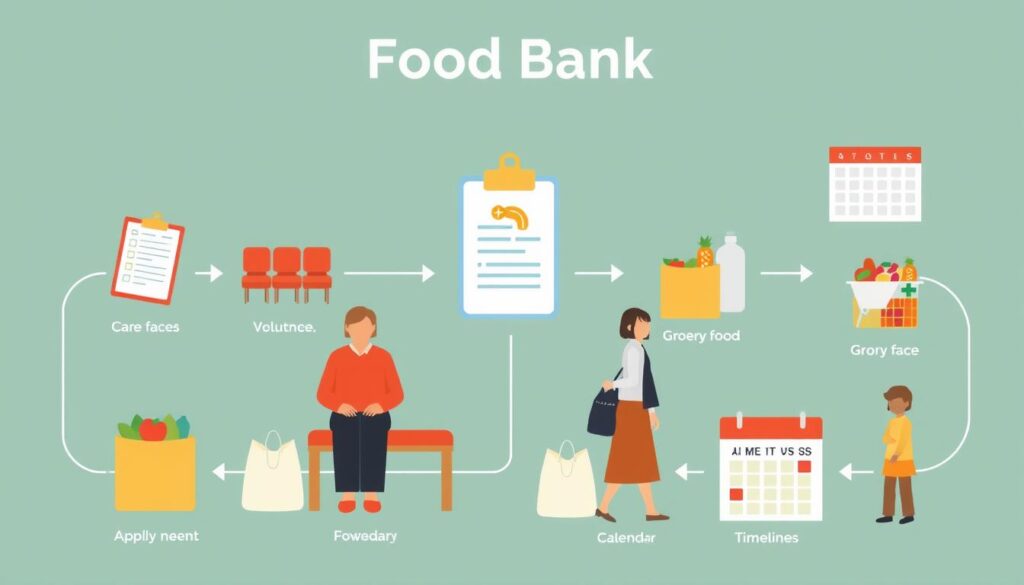
- Initial Contact
- Call local food bank or community center
- Check online application options
- Verify operating hours (usually Monday-Friday, 8:00 AM to 5:00 PM)
- Documentation Preparation
- Gather proof of income
- Collect identification documents
- Prepare proof of residency
- Application Submission
- Complete online or in-person application
- Submit required documentation
- Participate in potential interview process
The SNAP application takes about 30-40 minutes online. Organizations like Queens Community House and Sunnyside Community Services help during this time.
“Navigating food assistance doesn’t have to be complicated. With the right resources, you can quickly access the support you need.” – Local Food Security Expert
Most food banks aim to process applications in 30 days. For urgent cases, they might help faster, often within seven days for those with little income and assets.
Remember, food bank locations and processes vary. Contact your local food bank or SNAP center for specific guidance on applying for food assistance.
Emergency Food Assistance Options
When you face a sudden financial crisis, emergency food help is crucial. Food banks and community groups know that unexpected problems can make it hard to buy food.
Same-Day Food Distribution
Same-day food programs offer quick help for those in urgent need. They provide a fast solution during financial emergencies.
- Immediate food support within hours of application
- Streamlined process for rapid assistance
- Nutritionally balanced emergency food packages
Crisis Assistance Programs
Local food banks have crisis programs for tough times. These services offer more than just food, providing full emergency support.
“In times of need, community support can make all the difference.” – Local Food Bank Director
Typical crisis food programs include:
- Disaster Household Distribution support
- Expedited SNAP benefit processing
- Targeted emergency food assistance for vulnerable populations
Remember, emergency food assistance is designed to provide temporary relief and help you get back on your feet during difficult times.
Frequency of Food Bank Visits
Knowing how often you can visit the food bank is key. The number of visits allowed each month varies. It’s important to check the rules in your area.
Here are some common visit frequencies:
- Once per month: This is the most common rule for many food banks.
- Twice per month: Some places offer more flexible schedules.
- Emergency visits: You can get extra help during tough times.
The Emergency Food Assistance Program (TEFAP) sets guidelines for regular help. Several things affect how often you can visit:
- What resources the local food bank has
- How much demand there is in the community
- The size of your household
- Your income level
“Food assistance is about providing support, not creating dependency” – Local Food Bank Director
In 2022, over 10% of US households struggled to get enough food. Knowing the rules for food bank visits is more crucial than ever. Always reach out to your local food bank to find out their specific rules and what help they offer.
Additional Food Support Programs
Finding food help can be tough, but many programs are here to assist. The U.S. has a wide range of initiatives to fight hunger and ensure families get the nutrition they need.
It’s key to understand how these programs work together. In Contra Costa County, about 26% of adults and kids struggle to get enough food. This shows how vital these programs are.
SNAP Benefits Integration
The Supplemental Nutrition Assistance Program (SNAP) gives monthly help for buying food. You must meet income and household size requirements. CalFresh offers quick help, giving emergency food benefits in just three days after applying.
- Monthly benefits for food purchases
- Income-based qualification
- Rapid application process
WIC Program Coordination
The Special Supplemental Nutrition Program for Women, Infants, and Children (WIC) focuses on nutrition support. It helps pregnant women, new moms, and young kids get the nutrients they need for growth.
| Program | Target Group | Key Benefits |
|---|---|---|
| SNAP | Low-income individuals/families | Monthly food purchasing assistance |
| WIC | Pregnant women, infants, children | Nutrition support and health resources |
Pro tip: These programs can work alongside food banks to give your family all-around nutrition support.
“Food assistance is not just about feeding people, but about nourishing communities and supporting health.” – USDA Representative
Special Considerations for Specific Groups
Food assistance programs are designed for different groups. Knowing who can get help is key. It ensures you get the right nutrition support for your situation.
Seniors and Food Assistance
Seniors have special food help through programs like CSFP. These programs are made for their dietary needs and financial struggles.
- Seniors aged 60+ have dedicated food assistance pathways
- Nutrition programs consider limited mobility and fixed incomes
- Specialized food packages address senior health needs
College Student Food Bank Eligibility
College students have their own rules for food bank help. To get SNAP benefits, they must:
- Be enrolled at least half-time
- Work 20 hours per week
- Participate in work-study programs
Gig Worker Food Assistance
Gig workers and self-employed folks have special ways to get food help. Their income is figured out differently, making it easier for them to get support.
“Nutrition knows no employment boundaries” – Local Food Bank Representative
Households with mixed immigration statuses face different rules in food programs. Local resources can help you understand these rules.
Tip: Always check with local food banks for the latest on who can get help. Rules can change often.
Conclusion
It’s important to know about food bank resources to fight hunger in your area. Almost 47 million people in the U.S. struggle with food insecurity. Food banks and support groups offer vital nutrition and help during tough times.
Support for hunger relief goes beyond just giving out food. Programs like SNAP and WIC, along with local food pantries, form strong support systems. The Regional Food Bank of Oklahoma, for example, helps over 1,300 programs in 53 counties, showing the impact of regional efforts.
When looking for food help, remember that who gets it depends on income and family size. The USDA and local food banks focus on giving out healthy food. They aim to provide foods rich in protein, whole grains, and balanced meals.
By actively looking for food bank help, you can make a big difference. Contact local groups, learn about how to apply, and ask for help when you need it. Every person in the community can help fight hunger and ensure everyone gets the nutrition they need.
